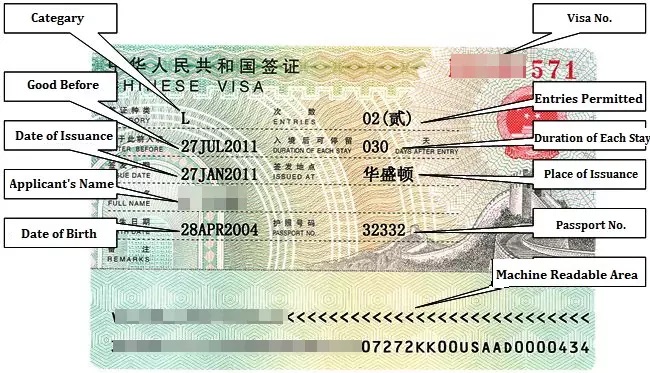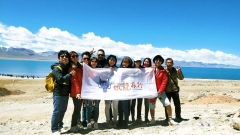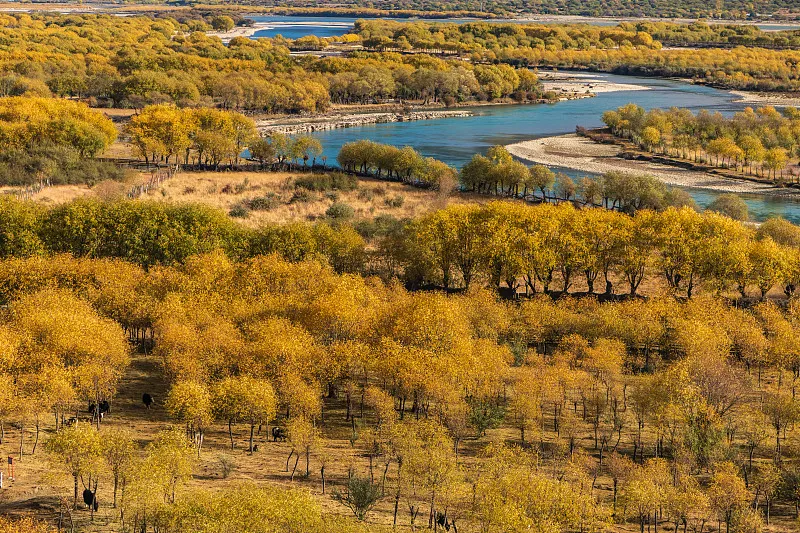Visiting China is an exciting prospect for travelers eager to explore its rich cultural heritage, stunning landscapes, and vibrant cities. If you plan to venture further inland to destinations like Tibet, obtaining a valid Chinese visa is the first and most crucial step. This guide will walk you through everything you need to know about applying for a China visa, from visa-free policies and visa types to the detailed application process, special notes for Tibet travel, and tips to ensure your paperwork is in order.
Why You Need a China Visa
Almost all international visitors to mainland China must possess a valid Chinese visa. Whether you intend to spend a few days exploring Beijing and Shanghai or embark on a more adventurous route across the Tibetan Plateau, a proper visa is mandatory upon arrival. Even if you are planning to travel to Tibet, you must first secure a general China visa. Only after that can you apply for the Tibet Tourism Bureau (TTB) permit required for entry into Tibet. Because Chinese embassies do not process Tibet permits directly, mentioning “Tibet” on your initial visa application may complicate matters, as you will be asked for a TTB permit you cannot obtain without first holding a Chinese visa. To avoid this bureaucratic loop, it is best to simply request a standard China visa without specifying Tibet in your application.

China Visa
Recent Visa-Free Policies
In recent years, China has introduced several visa-free entry programs to encourage tourism and international exchange. As updated on May 15, 2025:
- Visa-Free for 38 Countries (Until December 31, 2026): Citizens of 38 countries—mostly in Europe, along with Australia, New Zealand, Malaysia, Singapore, South Korea, and Thailand—can enter China visa-free for up to 30 days per visit. This list includes Andorra, Australia, Austria, Belgium, Brunei, Bulgaria, Croatia, Cyprus, Denmark, Estonia, Finland, France, Germany, Greece, Hungary, Iceland, Ireland, Italy, Japan, Latvia, Liechtenstein, Luxembourg, Malaysia, Malta, Monaco, Montenegro, North Macedonia, the Netherlands, New Zealand, Norway, Poland, Portugal, Singapore, Slovakia, South Korea, Spain, Switzerland, and Thailand.
- South America Visa-Free (June 1, 2025 – May 31, 2026): Citizens of Brazil, Argentina, Chile, Peru, and Uruguay can enjoy visa-free entry into China for up to 30 days during this one-year period.
Even if your nationality allows visa-free entry, these waivers typically apply only to short stays in main Chinese cities. They generally do not extend to traveling into Tibet. Therefore, visitors planning to proceed to Tibet must still secure a standard Chinese visa before departure and subsequently obtain the Tibet Tourism Bureau permit once in China.
Special Requirement: Entering Tibet from Nepal
A crucial consideration for many backpackers and adventure travelers is how to get into Tibet. If you enter Tibet overland from Nepal—crossing the border at the Friendship Highway (Gyirong or Zhangmu)—you cannot use a standard individual visa. Instead, you need a China Group Visa (Group L Visa). Current regulations mandate a minimum of four participants to apply for a group visa into Tibet from Nepal. This process remains somewhat complicated because local border authorities coordinate with the Chinese consulate to ensure that applicants hold the correct visa category. If you plan to enter Tibet via Nepal, it is essential to arrange a China Group Visa in advance through a reputable travel agency such as China Dragon Travel. We can assemble the required group, prepare paperwork, and guide you through the steps so you aren’t turned away at the border.
Types of China Visas and Which One to Choose
China issues a variety of visa categories depending on the traveler’s purpose. Here are the most common visas relevant to tourists and those considering Tibet travel:
- L Visa (Tourist Visa):
- Issued to individuals entering China solely for tourism, visiting family, or short-term social visits.
- Most first-time visitors apply for an L visa.
- Valid for single entry, double entry, or multiple entries. Duration and entry count depend on your nationality and the specific consulate’s decision.
- Z Visa (Work Visa):
- For foreigners who have secured employment in China.
- Requires a work permit and an invitation from a Chinese employer.
- Not suitable for short-term tourism.
- F Visa (Business Visa):
- Intended for commercial and trade exchanges, visits by experts, or for those attending exhibitions.
- Can be used by travelers joining a Tibet tour, as an F visa can satisfy the requirements for a Tibet Tourism Bureau permit.
- X Visa (Student Visa):
- Designed for international students enrolled in Chinese educational institutions.
- Invalid for short-term travel in Tibet unless supplemented by a valid TTB permit.
- D Visa (Permanent Residence):
- For foreign nationals applying for permanent residency in China (rarely relevant for short-term tourists).
- J Visa (Journalist Visa):
- Issued to foreign journalists accredited to work in China.
- Not valid for tourism or Tibet travel.
As a rule of thumb, if your main purpose is to sightsee in China and then visit Tibet, the L Visa (Tourist Visa) is the easiest to obtain.
Step-by-Step Visa Application Process
Applying for a Chinese visa can be straightforward if you follow each step carefully. Below is a comprehensive breakdown of the process:
1. Choose the Correct Visa Type
Before beginning your application, confirm that you need an L Visa. If you will travel through Nepal into Tibet, you must secure a Group L Visa through an authorized travel agency. For travel itineraries that require entry to Tibet, China Dragon Travel can advise on the most suitable visa category and help prepare supporting documents.
2. Complete the Online Application Form
China offers two primary online portals for initial visa applications, which let you complete and print the required forms:
- Chinese Foreign Affairs Website: https://cova.mfa.gov.cn/qzCoCommonController.do?show&pageId=index&locale=en_US
- Visa for China Official Site: https://www.visaforchina.cn/#/nav/system
Both platforms will guide you through questions about personal information, travel itinerary, entry/exit points, means of transport, intended dates of travel, and other details. When describing your itinerary, you may say you’ll visit Beijing, Xi’an, Chengdu, etc., without mentioning Tibet. Once you arrive in China, you can modify your plans to include Tibet with the help of China Dragon Travel.
3. Gather Required Documents
When attending your appointment at the Chinese consulate or visa application center, you must present the following:
a. Valid Passport:
- Original passport with at least six months’ validity beyond your planned entry date.
- At least two blank visa pages.
b. Passport Photo:
- Two recent color photographs (taken within the past six months) against a white background.
- Photo dimensions: 33mm × 48mm.
c. Completed Visa Application Form:
- The form printed from the online portal, filled out truthfully and signed.
d. Copy of Passport Bio Page:
- Photocopy of your passport’s information page (full color).
e. Tour Itinerary / Flight and Hotel Reservations:
- A detailed day-by-day travel plan including city names, dates, and transportation methods.
- Confirmed flight tickets for entry into and exit from China.
- Hotel bookings or proof of accommodation for each night of your stay (can be self-booked or arranged via a travel agency).
f. Invitation Letter / Tourist Invitation from China Dragon Travel (Optional but Recommended):
- For many consulates, having an invitation letter or voucher from a reliable Chinese travel agency strengthens your application.
- China Dragon Travel can provide an official invitation letter, along with a sample itinerary, hotel confirmations, and any other travel vouchers needed to satisfy the visa officer.
g. Visa Fees and Service Fees:
- Visa application fee varies by nationality and consulate (single-entry, double-entry, or multiple-entry).
- Service fee if you use a visa center or a third-party agency to submit your paperwork.
h. Proof of Financial Capability (If Requested):
- Some embassies or consulates may ask for bank statements or proof of sufficient funds.
- Check with your local Chinese mission if this is required.
i. Additional Documents (If Applicable):
- Business travelers (F Visa): Business invitation letter from a Chinese company.
- Students (X Visa): Admission letter from a Chinese educational institution.
- Work (Z Visa): Work permit and invitation issued by the Chinese employer.
4. Schedule and Attend the Visa Appointment
After completing the online application and gathering your documents:
- Book an Appointment:
- Use the online portal or call the visa application center to schedule an interview.
- Some consulates require appointments; others accept walk-ins. Book as early as possible, especially during peak travel seasons.
- Attend the Interview:
- Arrive at the consulate or visa application center on time, dressed neatly.
- Bring all original documents and photocopies.
- Be prepared to answer questions about your travel plans, occupation, and reasons for visiting.
- Fingerprint Collection:
- Most applicants must provide fingerprints (ten-finger scan) at the consulate or visa center.
- Children under 14 and seniors over 70 are usually exempt from fingerprinting, but this varies by location.
- Pay Fees and Submit Documents:
- Pay the visa fee, which may be collected in local currency, U.S. dollars, or other acceptable forms (check with your consulate).
- Submit your application form, passport, photos, and supporting documents.
5. Visa Processing Time
Processing times vary significantly depending on the country where you apply:
- Standard Processing: Generally 4 to 5 working days after the interview and submission of documents.
- Express Processing (If Available): 2 to 3 working days, with an additional fee.
- Rush Processing (In Some Regions): 1 working day service may be available, but rarely offered.
In some embassies or consulates, appointment waiting times can stretch from a few days up to several weeks or months, especially during peak tourist seasons. For example, consulate offices in large cities like London or New York sometimes book interview slots two to three months in advance. Conversely, smaller consulates might have shorter wait times. Therefore, plan and submit your application as early as six to eight weeks before your intended departure date to avoid delays.
Special Notes for Tibet Travel
Traveling to Tibet is unlike visiting other provinces in China. In addition to a valid Chinese visa, you must obtain a Tibet Tourism Bureau Permit (TTB Permit) to enter and move about the Tibet Autonomous Region (TAR). The two requirements—Chinese visa and TTB permit—are intertwined:
- Do Not Mention Tibet on Your Chinese Visa Application:
- If you indicate “Tibet” on your visa application form (under travel purpose or itinerary), the Chinese consulate may demand proof of a TTB permit up front.
- However, you cannot obtain a TTB permit until you hold a valid Chinese visa.
- This circular demand can cause delays or outright refusals. To prevent this bureaucratic catch-22, simply list your itinerary as “Beijing – Xi’an – Chengdu” or similar. Once you enter China, contact China Dragon Travel to handle the TTB permit process for joining an organized Tibet tour.
- Tibet Tourism Bureau (TTB) Permit:
- After landing in Lhasa, you must submit your passport and Chinese visa information to the local TTB office through an authorized travel agency.
- China Dragon Travel arranges the TTB permit on your behalf, coordinating with local authorities to secure approval.
- TTB permits typically take three to seven working days to process. During this period, you can continue exploring other parts of China outside Tibet.
- China Group Visa for Overland Entry from Nepal:
- If you plan to cross into Tibet from Nepal via the Friendship Highway, a Group L Visa is mandatory.
- A minimum of four participants is required to apply for this group visa.
- China Dragon Travel can assemble the group, prepare the group visa application, and ensure that everyone’s passports, photos, and itineraries are submitted together.
- After crossing the border, you still need a TTB permit. Your onward journey to Lhasa will be organized by China Dragon Travel’s local partners, who will verify that you hold both the group visa and TTB permit.
- High-Altitude Considerations:
- Lhasa sits at over 3,600 meters (11,800 feet) above sea level. Upon receiving your TTB permit, you will travel through high-altitude terrain.
- Bring medication for altitude sickness (e.g., acetazolamide), warm clothing, and ensure you take time to acclimatize gradually.
Tips for a Successful Application
- Apply Early:
- Secure your visa appointment and submit documents at least 6–8 weeks before departure, particularly during peak travel months.
- Use a Trusted Travel Agency:
- Obtaining a tourist invitation letter and sample itinerary from a reliable agency like China Dragon Travel can significantly improve your chances of approval.
- We provide all necessary supporting documents, including a detailed itinerary, hotel bookings, and official agency letterhead, so you can present a strong case.
- List a General Itinerary:
- To avoid TTB permit complications, keep your initial itinerary generic (e.g., “Beijing – Xi’an – Chengdu – Shanghai”).
- Once in China, contact China Dragon Travel to adjust your plans and secure the Tibet permits you need.
- Request the Appropriate Number of Entries:
- If your itinerary includes multiple trips (e.g., Hong Kong or Macau side trips, re-entry for Tibet after Nepal), request a multi-entry visa (double or multiple entry) lasting 60 or 90 days.
- Some consulates (e.g., in the U.S., U.K., Australia) are more flexible and will grant longer-stay, multi-entry visas if you ask politely and have a solid travel plan.
- Verify Activation Dates:
- Double-check whether your visa activates on the date of issue or date of entry. This is especially important for 60- and 90-day visas.
- Ask the visa officer to clarify if you are unsure.
- Be Honest but Strategic:
- Provide truthful information on your application form, but avoid mentioning Tibet if you haven’t yet obtained the TTB permit.
- Consulates will not penalize you for refining your itinerary once you arrive in China, as long as you hold a valid visa.
- Bring Extra Everything:
- Carry extra passport copies, itinerary printouts, hotel booking confirmations, and invitation letters.
- If the consulate requests additional evidence (e.g., flight confirmation or bank statements), you can provide it on site.
- Stay in Communication:
- Keep your cell phone on and provide a local contact or working e-mail address in case the consulate needs to reach you for missing documents or clarifications.
Frequently Asked Questions
Q1: Can I apply for a China visa online without visiting an embassy?
A1: No. While you can fill out the application form online, you must appear in person at a Chinese consulate or visa application center to submit documents, have your photo and fingerprints taken, and attend an interview (if required).
Q2: If I have a visa-free entry privilege, can I go to Tibet?
A2: No. Visa-free stays generally apply only to specific Chinese ports of entry and do not cover travel to Tibet. You must obtain a separate Chinese visa (L visa) before applying for a Tibet Tourism Bureau Permit.
Q3: How early can I apply for a visa before my trip?
A3: You can submit your application up to three months before departure. However, it is recommended to apply 6–8 weeks in advance, especially during busy seasons.
Q4: Can I extend my visa in Tibet if I decide to stay longer?
A4: Extending a visa within Tibet can be challenging. Extensions are usually granted by Public Security Bureau desks in Lhasa or other major cities, but approval is discretionary. To avoid uncertainty, request a longer-stay visa (e.g., 60 or 90 days) initially if you anticipate staying in Tibet for over 30 days.
Q5: I plan to fly from Nepal into Lhasa. Do I still need a group visa?
A5: Yes. Overland entry from Nepal requires a Group L Visa with at least four participants. China Dragon Travel can coordinate group members, submit the group visa application on your behalf, and ensure you hold the correct documents for a smooth border crossing.
Q6: Can I use a business (F) visa to obtain a Tibet permit?
A6: Yes. An F visa is acceptable for applying for a TTB permit. However, if your primary purpose is tourism, you should still apply for the L visa. A business visa can be convenient if you plan to attend meetings or conferences in other parts of China before traveling to Tibet.
Q7: Are vaccinations required for a China visa?
A7: Generally, no vaccinations are required for a standard tourist L visa. However, if you are traveling from certain African or South American countries, the Chinese embassy may ask for a valid Yellow Fever vaccination certificate. Always verify current health requirements based on your departure point.
Applying from Different Regions: Considerations for Major Consulates
China’s embassy and consulate offices worldwide each have their own quirks regarding visa processing:
United States:
U.S. consulates often issue 10-year multiple-entry tourist visas for Americans, valid for 60 days per stay. If you are a U.S. citizen, this long-term visa is ideal for multiple trips to Tibet (with separate TTB permits).
United Kingdom:
U.K. consulates routinely grant 60- or 90-day multiple-entry visas for British nationals. Processing times run about 4–5 working days after submission.
Australia & New Zealand:
Australian and New Zealand consulates often require in-person appointments at designated Chinese visa application centers. They usually issue 60-day multiple-entry visas, though 90-day visas can be obtained through some third-party agencies.
Europe (Schengen Area, U.K., etc.):
Most European nationals receive 30-day single-entry visas by default. If you need longer stays, politely request a double-entry or multi-entry visa during your appointment and submit a detailed itinerary showing multiple visits.
Southeast Asia & Beyond:
In many Asia-Pacific countries, you can secure a 30-day visa in 3–5 working days. Some consulates may require proof of onward travel after departing China.
Hong Kong & Macau:
Hong Kong citizens enjoy visa-free entry to mainland China (single entry up to 7 days, multiple entry up to 14 days). For longer visits or Tibet travel, apply through the Hong Kong Immigration Department (HKSAR) or Macau SAR authorities. They can issue a 90-day multiple-entry mainland visa, which is convenient for Hong Kong/Macau residents.
How China Dragon Travel Can Help
Navigating China’s visa regulations and Tibet’s permit requirements can be confusing, particularly if you are unfamiliar with the bureaucratic nuances. As a trusted travel agency specializing in Tibet and greater China tours, China Dragon Travel offers the following services:
- Visa Support and Documentation:
- We provide sample itineraries, hotel booking confirmations, and an official invitation letter on China Dragon Travel letterhead, satisfying most consulates’ requirements.
- Our visa experts will review your application materials, advise you on filling out the forms, and arrange courier services to retrieve your passport once the visa is issued (where applicable).
- Tibet Permit Coordination:
- Once you arrive in Lhasa with your Chinese visa, we handle the Tibet Tourism Bureau permit application directly with local authorities.
- China Dragon Travel ensures all documentation, including passport scans, visa copies, and travel agency letters, are submitted correctly. In most cases, we secure your TTB permit within 3–7 working days.
- Group Visa Arrangements from Nepal:
- If you plan to cross into Tibet from Nepal, we form a group of at least four participants, prepare the Group L Visa application, and guide you through the process.
- Our team monitors all deadlines for the group visa, coordinates with the Chinese consulate in Kathmandu (or the relevant mission), and ensures a seamless border crossing.
- Full Travel Itinerary Planning:
- Beyond visa support, China Dragon Travel crafts personalized travel itineraries that combine major Chinese highlights (Beijing, Xi’an, Shanghai, Chengdu) with immersive Tibet experiences (Lhasa, Everest Base Camp, Namtso Lake, and more).
- Whether you are a first-timer or a repeat visitor, our experienced consultants tailor every detail: accommodations, transportation, guided tours, meals, and special activities (monastery visits, local hospitality, cultural performances).
- Ongoing Assistance and Emergency Support:
- In the unlikely event of delays, lost documents, or medical emergencies, our 24/7 hotline is always available to provide guidance and assistance.
- We maintain strong relationships with Chinese consulates, police authorities, and local government offices, allowing us to help resolve any visa or permit issues quickly.
Ready to start your Tibet adventure? Contact China Dragon Travel today for personalized visa assistance, expert trip planning, and unparalleled local insights. Let us handle the paperwork while you plan the memories!












